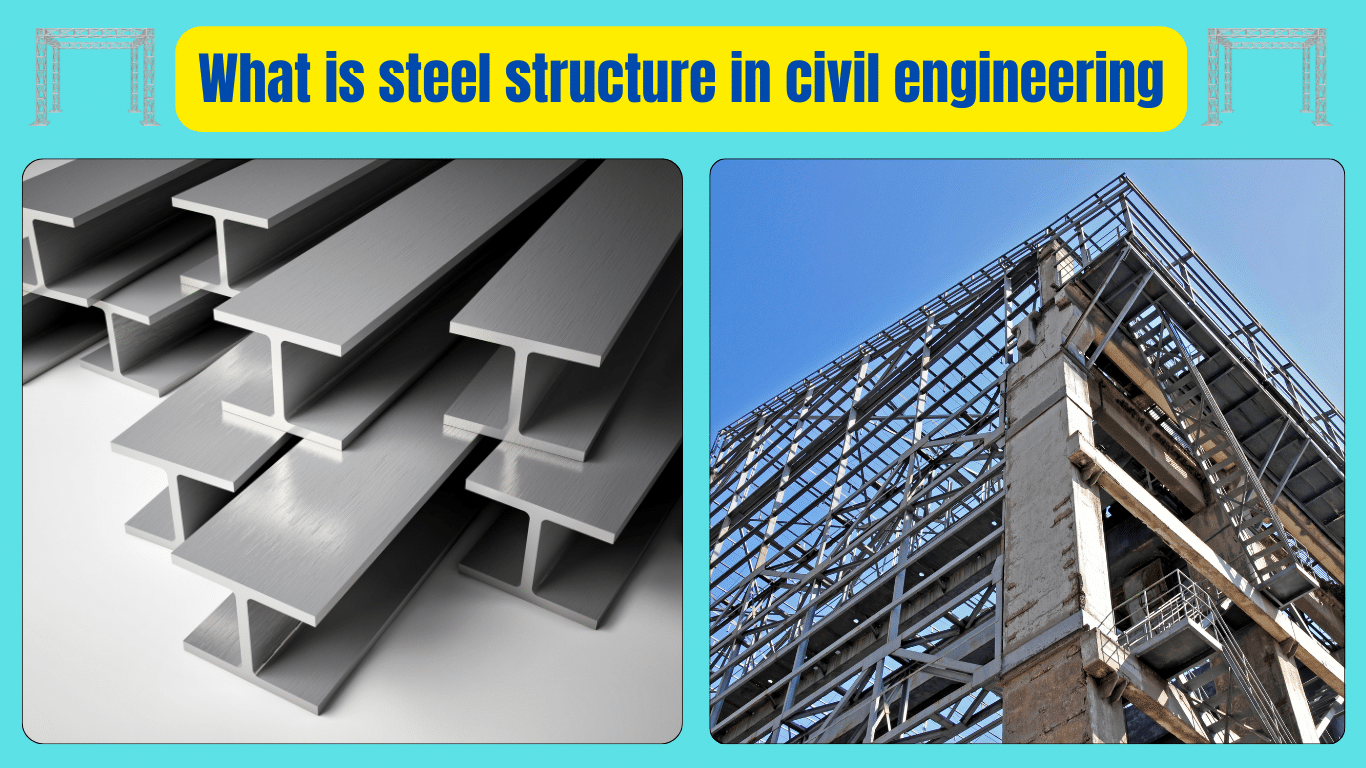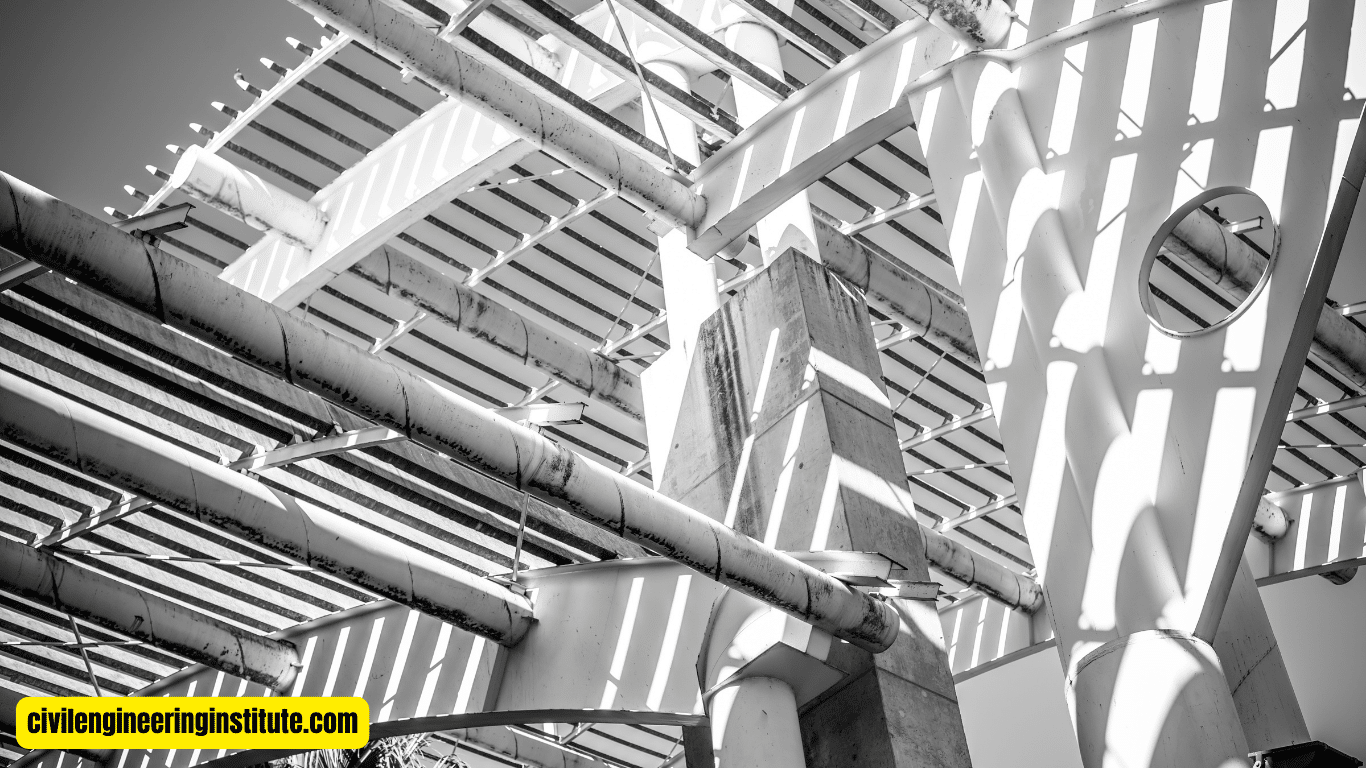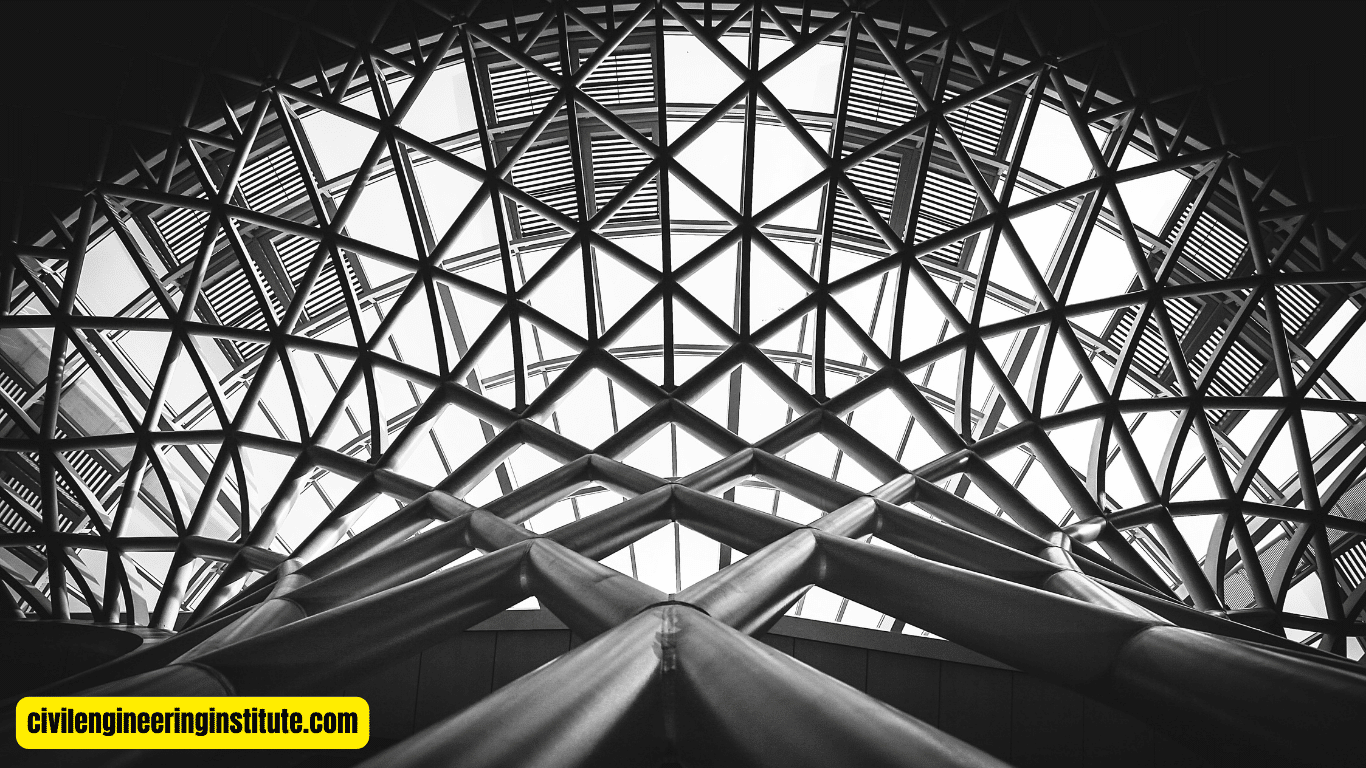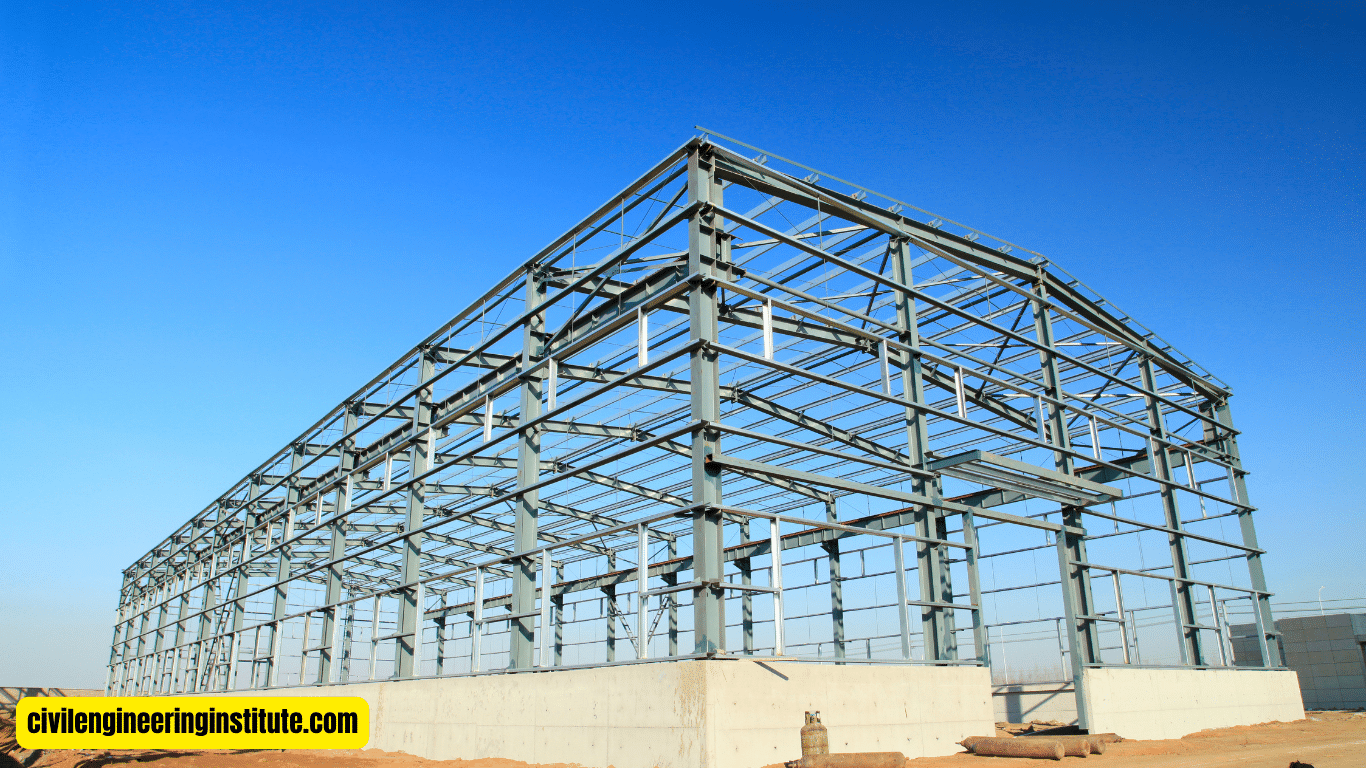The steel structure in civil engineering refers to the framework made of steel components used to support buildings, bridges, towers, and other structures. Unlike traditional concrete structures, steel structures are constructed using steel beams, columns, and plates, offering high strength and durability.
These structures are designed to withstand various environmental conditions, including seismic activity and high winds. Steel structures are preferred in civil engineering due to their flexibility in design, faster construction time, and cost-effectiveness. Additionally, steel is a recyclable material, making it environmentally friendly. In conclusion, steel structures play a crucial role in modern civil engineering by providing reliable and sustainable solutions for various construction projects.
Understanding What is steel structure in civil engineering?
Steel structures are integral components in civil engineering projects, offering a sturdy and versatile framework for various types of constructions. In this article, we delve into the fundamentals of steel structures, their significance in civil engineering, and their myriad applications.
What are Steel Structures?
Steel structures refer to frameworks constructed primarily from steel components such as beams, columns, and plates. Unlike traditional concrete structures, which rely on reinforced concrete for support, steel structures utilize steel’s inherent strength to bear loads and resist external forces.
Components of Steel Structures
- Beams
- Columns
- Plates
Beams: Steel beams are horizontal structural elements that support the weight of the structure above them. They distribute loads evenly across the structure and play a crucial role in ensuring stability.
Columns: Steel columns are vertical structural members that provide vertical support to the structure. They transmit the loads from beams and other structural elements to the foundation.
Plates: Steel plates are flat structural elements used to connect and reinforce various components of the structure. They provide stability and strength to the overall framework.
Advantages of Steel Structures
Steel structures offer several advantages over traditional construction materials, including:
- High Strength
- Flexibility in Design
- Faster Construction
- Durability
- Sustainability
High Strength: Steel is known for its exceptional strength-to-weight ratio, making it suitable for constructing structures that require superior strength and durability.
Flexibility in Design: Steel’s versatility allows for intricate and innovative designs, enabling architects and engineers to create aesthetically pleasing and functional structures.
Faster Construction: Steel structures can be prefabricated off-site, reducing construction time and labor costs significantly.
Durability: Steel is resistant to corrosion, rust, and degradation, ensuring the longevity of the structure even in harsh environmental conditions.
Sustainability: Steel is a recyclable material, making it an environmentally friendly choice for construction projects.
Applications of Steel Structures
Steel structures find widespread use in various civil engineering projects, including:
- Commercial Buildings
- Bridges and Flyovers
- Industrial Facilities
- Sports Arenas and Stadiums
- Residential Construction
Commercial Buildings: Skyscrapers, office complexes, shopping malls, and retail centers often utilize steel structures for their strength, flexibility, and cost-effectiveness.
Bridges and Flyovers: Steel is the preferred material for constructing bridges and flyovers due to its ability to span long distances without the need for additional support.
Industrial Facilities: Steel structures are common in industrial settings such as factories, warehouses, and manufacturing plants, where they provide robust support for heavy machinery and equipment.
Sports Arenas and Stadiums: Stadiums and sports arenas rely on steel structures to accommodate large crowds while ensuring safety and structural integrity.
Residential Construction: Steel framing systems are increasingly being used in residential construction for their durability, ease of installation, and design flexibility.
Some important queries: What is steel structure in civil engineering?
What is Meant by Steel Structure?
A steel structure refers to a framework constructed primarily from steel components such as beams, columns, and plates. Unlike traditional concrete structures, which rely on reinforced concrete for support, steel structures utilize steel’s inherent strength to bear loads and resist external forces. These structures are widely used in civil engineering projects due to their durability, versatility, and cost-effectiveness.
What is steel structural engineering?
Steel structural engineering is a branch of civil engineering that focuses on the design, analysis, and construction of steel structures. Structural engineers in this field are responsible for ensuring that steel structures meet safety standards, withstand loads, and remain structurally sound over their intended lifespan. They utilize principles of mechanics, material science, and mathematics to create efficient and reliable steel structures for various applications.
What is the steel structural concept?
The steel structural concept refers to the underlying design philosophy and approach used in the construction of steel structures. This concept encompasses factors such as load distribution, material selection, connection details, and overall structural stability. Engineers develop structural concepts based on project requirements, environmental conditions, and safety considerations to ensure that steel structures meet performance criteria and regulatory standards.
What is a basic steel structure?
A basic steel structure typically consists of essential components such as beams, columns, and bracing elements arranged in a geometric configuration to provide stability and support. These structures may vary in complexity depending on the specific application and design requirements. Basic steel structures serve as the foundation for more intricate construction and play a fundamental role in civil engineering projects across various sectors.
Why use steel structures?
Steel structures offer numerous advantages over traditional construction materials, making them a preferred choice for civil engineering projects. Some reasons to use steel structures include their high strength-to-weight ratio, flexibility in design, faster construction time, durability, and sustainability. Additionally, steel structures can be prefabricated off-site, reducing construction costs and minimizing environmental impact.
What is the principle of steel structures?
The principle of steel structures is based on the utilization of steel’s inherent properties to create efficient and reliable structural systems. These principles include load-bearing capacity, structural stability, material behavior under different loading conditions, and adherence to safety standards. Engineers apply these principles in the design, analysis, and construction of steel structures to ensure their integrity, performance, and longevity in various applications.
Conclusion
In conclusion, steel structures play a pivotal role in modern civil engineering, offering a combination of strength, versatility, and sustainability. Whether in towering skyscrapers or simple residential homes, steel structures provide the framework for safe, efficient, and aesthetically pleasing construction. As technology advances and construction methods evolve, steel will continue to be at the forefront of innovation in civil engineering.
FAQs
What is a steel structure in civil engineering?
A steel structure is a framework made of steel components, like beams and columns, used in construction projects.
How are steel structures different from concrete structures?
Steel structures use steel for support, while concrete structures use reinforced concrete. Steel structures are often lighter and more flexible in design.
What are the main components of a steel structure?
The main components include beams, columns, and plates, which provide support and stability to the structure.
What are the advantages of using steel structures?
Advantages include high strength, faster construction, flexibility in design, durability, and sustainability due to steel’s recyclability.
Where are steel structures commonly used?
Steel structures are used in various projects, like skyscrapers, bridges, industrial buildings, sports arenas, and residential homes.
Are steel structures expensive to build?
While initial costs may be higher than some materials, steel structures often offer long-term cost savings due to their durability and faster construction.
Are steel structures environmentally friendly?
Yes, steel is recyclable, reducing environmental impact, and steel structures can be designed for energy efficiency.
How are steel structures designed?
Structural engineers use computer-aided design (CAD) software and calculations to ensure steel structures meet safety standards and withstand loads.
Can steel structures be modified or expanded?
Yes, steel structures are often easier to modify or expand compared to other materials, making them adaptable to changing needs.
Are steel structures safe from earthquakes and other disasters?
Properly designed and constructed steel structures can withstand seismic activity, high winds, and other natural disasters, making them a safe choice for many projects.






